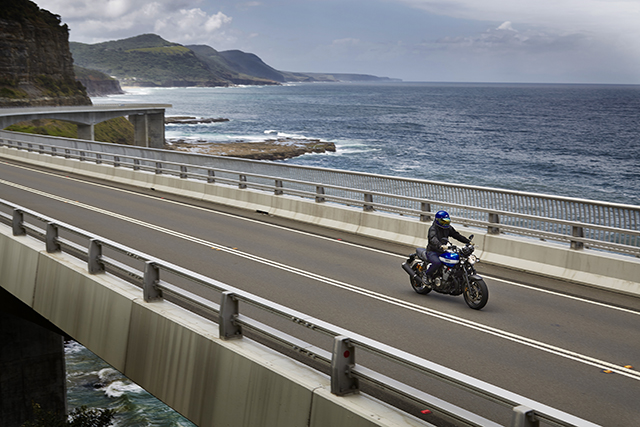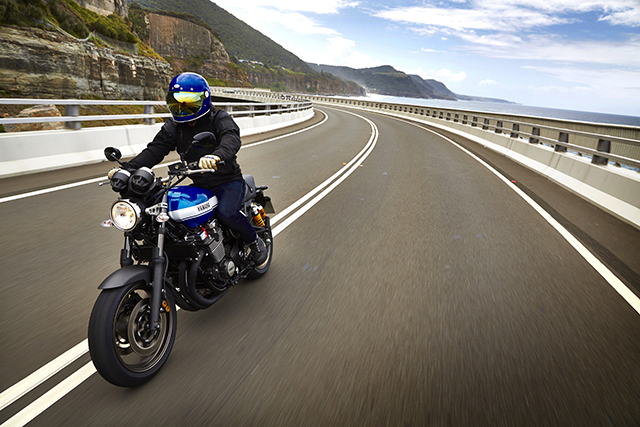
A little while back I received an invitation from Yamaha to the XJR1300 European press launch. Naturally, I was thrilled to be part of it and sent back a RSVP with the requested passport information saying I would love to be involved in the European launch. So my mind wanders off, picturing where we would be riding the XJR? Maybe we would be taken on the legendary German autobahn where pesky speed limits have been slain? Or perhaps we’ll disappear down the picturesque Amalfi coast with the Mediterranean breeze flowing in my locks? Or could we be taken up one of the most famous and photographed roads in Italy, the Stelvio Pass, with its endless hairpin turns? Then reality hit when I finally read the details of the invitation. The launch was actually going to be held in Sydney, Australia! What? That’s where I live. So after the initial disappointment, I realised being a native could actually come in handy while doing the press ride, like being comfortable riding on the left hand side of the road… but more on that later.
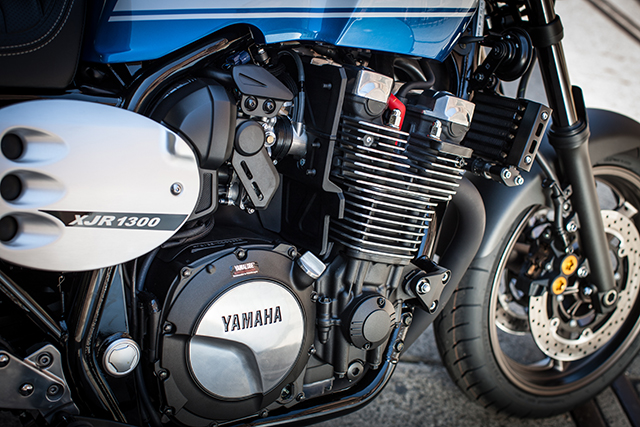
The press launch started at the House of Simple Pleasures – AKA Deus Sydney – where we were given a brief history on the XJR by Shun Miyazawa, the product development guru from Yamaha. Over the past few years the XJR has been given to many well known custom bike builders through the Yard Built program. First, there was the Wrenchmonkees who kicked it off with their stripped back version – which Shun tells me over a beer that this is still one of his favourite builds. So much so that they have based the latest model on its clean horizontal lines. Unfortunately the bike doesn’t look much like the Wrenchmonkees rendition but it has been designed to be customized. And I don’t mean just by pro builders. No, Yamaha wants owners to be able to personalize the bike themselves with a catalogue of quality bolt on parts that have been designed with builders like Deus, Keino, Roland Sands and El Solitario. After the presentation was finished and seeing all the great XJR pro builds I was eager to ride it the following morning.
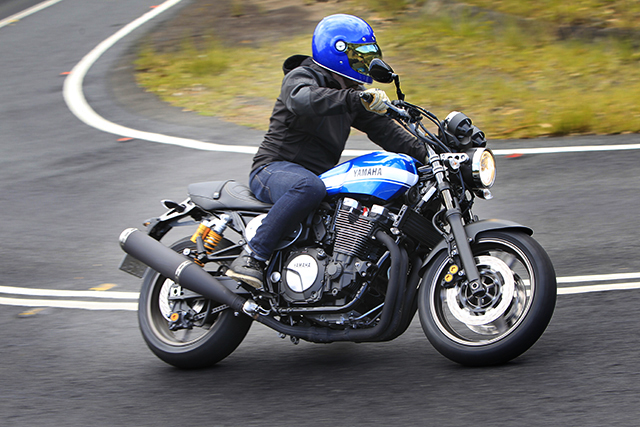
The morning came around fast and we were split up into different riding groups. I was in the ‘Italian’ group – all the journalists were from Italy or nearby countries like Sicily and Portugal, except for me. Outside the hotel there were over 20 XJRs lined up for journalists. It’s probably a good time to mention that the XJR comes in two different models: the standard and the Racer edition. As the name suggests the Racer is a ‘café racer’ inspired version, with carbon nose fairing, a carbon café racer seat and clip-on bars. The riding position is much lower than the standard version, and after sitting on it I felt like I may have been a touch too short for the set up (I’m 5’9″) to be able to comfortably ride all day on it. Luckily, I was given the standard model for the journey. It has higher bars and a comfortable riding position that is similar to my daily ride – a Triumph Bonneville.
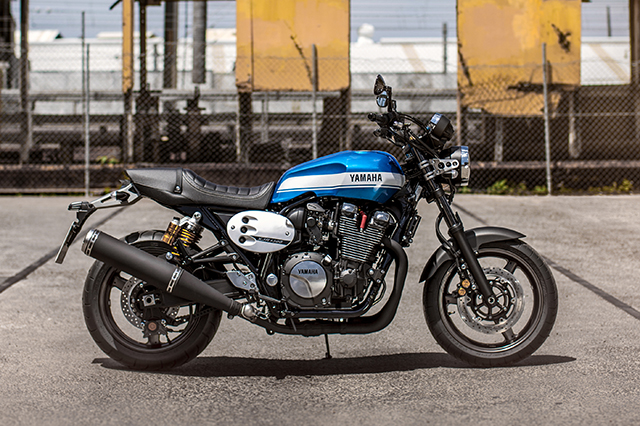
We were introduced to our German guide, which was a little concerning, because obviously he was used to riding on the other side of the road. But then I was told he had been here for three weeks practicing the route he was taking us on. So we all jumped on our bikes and hit the road. We were 5 minutes into our ride when my concerns came back into play, with our German guide taking the whole group onto the wrong side of the road turning left at an intersection into oncoming traffic. It was like lambs being led to slaughter. Luckily there was very little traffic and he remembered right away that we were all on the wrong side of the road. After a few apologies by our red faced German guide, we got back on the road – this time on the right side.
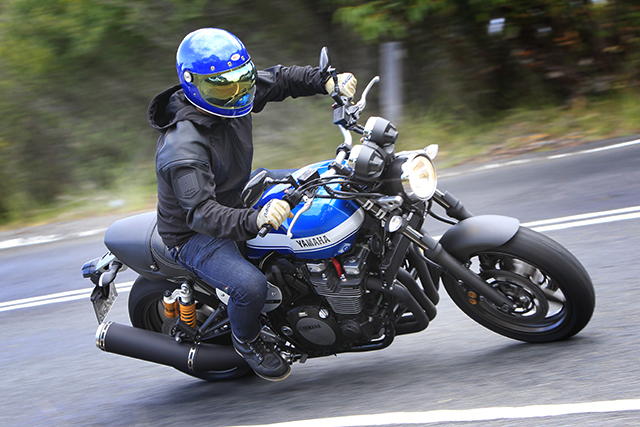
After riding for a while, the first thing I noticed about the XJR is that it’s so incredibly smooth between gears. The inline-four 1251cc engine has loads of power and is apparently Yamaha’s biggest air-cooled inline-four on the market. We seemed to be unlucky on the roads, being caught behind trucks, learner cars and even a tractor. But the XJR’s 98hp and 80 lb-ft of torque made it extremely easy to pull out and over-take in small spaces. No matter what gear I was in, there was power to get past anything – even the odd Italian journo.
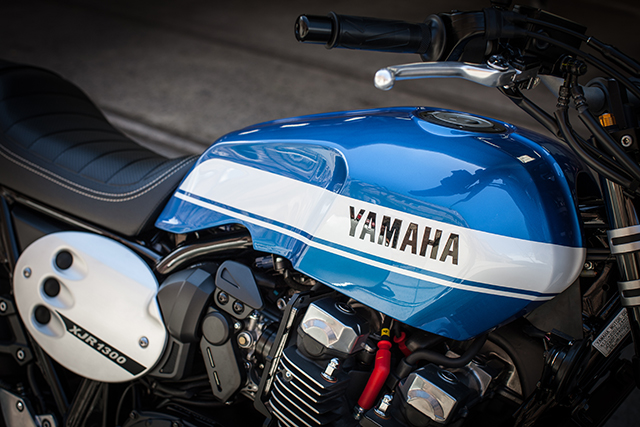
The second thing I noticed was the sound – the lack of it, that is. For a classic looking bike with a four-into-one exhaust it is relatively quiet. The Racer version did have a deeper note, due to the Akrapovic exhaust, which I’m told is an optional extra at an additional charge. Of course, it is easy to change that bark and would probably be one of my first mods – after replacing that ugly rear plastic fender – which I’m sure was designed to appease legal requirements.
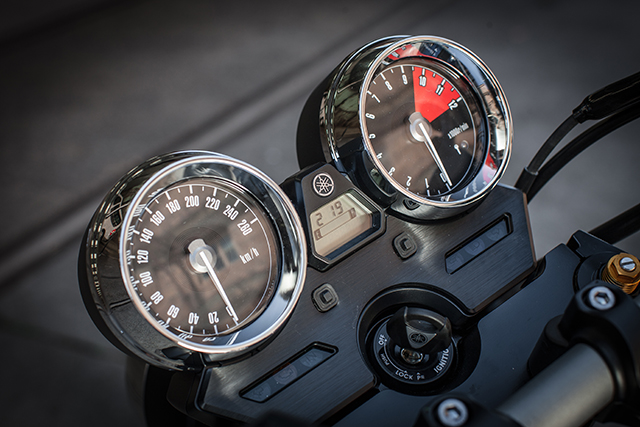
As we were travelling down the winding country roads, I was thinking about the weight of the bike. It weighs 240kg, which is almost 20kg heavier than the BMW R nineT, although, to be honest, it didn’t really feel that heavy when riding at speed. Sure, it didn’t feel like a nimble light-weight bike, but it didn’t feel as heavy as a Harley Sportster 883, which weighs about the same but has a very different stance. The only time the XJR feels weighty is when being manoeuvred into a tight parking spot, but you’d have that problem with any large capacity bike.
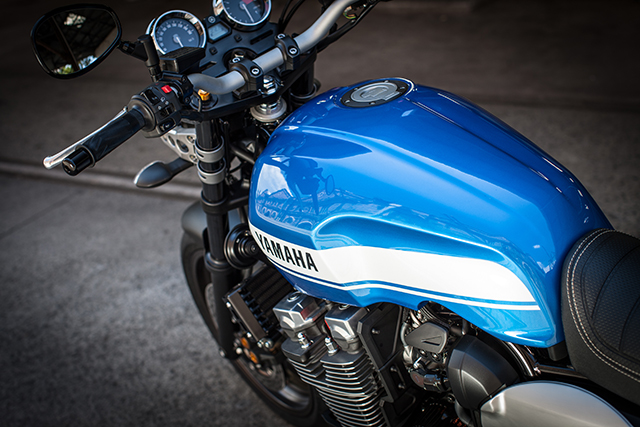
One of the biggest cosmetic changes on this model is the tank – they’ve shaved 6 and a half litres off the original beefy 21 litre tank. They have made it considerably thinner, mainly on the sides, and it now holds 14.5 litres of fuel. Shun tells us they wanted it thinner so that you can see the engine sticking out on each side, which visually makes the bike look more agile. When riding the bike, the scooped out smaller tank now accommodates your knees a lot better, which makes you feel nice and tucked in when going into corners. Surprisingly, the tank is actually made out of plastic by Accerbis – who are an Italian off road tank specialist. The vintage blue and white livery makes the tank one of the best updates on this new model.
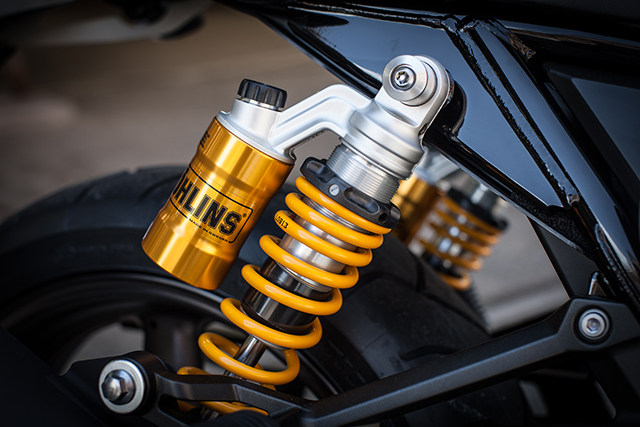
When it comes to the suspension, the XJR has a pretty good set up, with adjustable piggy back Ohlins twin-shocks on the back that made for a comfortable ride on some of the dodgier roads. Mine were set on the harder end of the spectrum and there was plenty of dampening on all the different roads we encountered. On the front it has standard right side up telescopic forks.
The braking was tested when we were travelling a little too fast through some country roads and I spotted a police car travelling the other way. I instinctively hit the front brake a little too fast and hard and it slowed the bike down immediately – my fellow Italian riders didn’t even flinch, oblivious to the fact that it was an Australian cop car. The brakes on the front are dual discs with a single disc on the back.
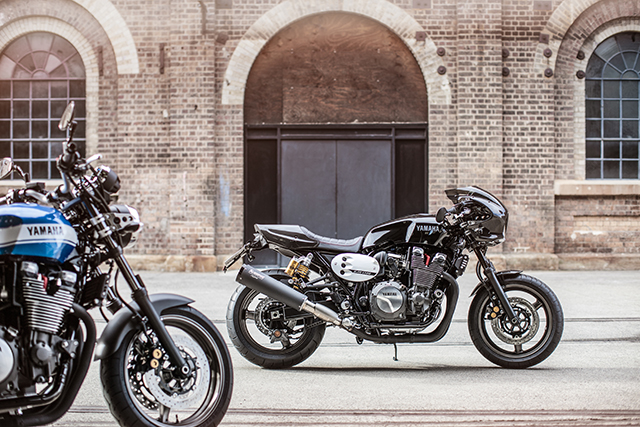
With such a large lump, it is a more thirsty beast. After we were halfway through our 280km I looked down at the gauges and I had already used half a tank. Which brings me to the gauges. They are simple in design and they have kept the digital component to a minimum, but the size of them is just way too big and bulky. But having said that, I haven’t seen a single classic styled modern bike on the market that has stock gauges which I’ve liked, since they are usually either too big or too ‘plasticky’. They do look much better on the Racer version though, because they are nicely hidden behind the fairing.
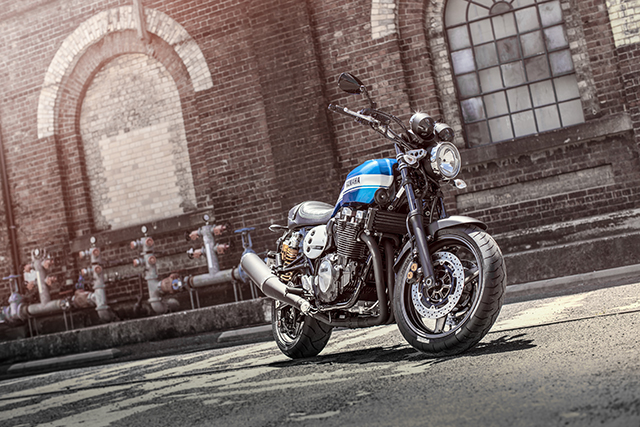
Then, before we knew it, we were at the end of our 280km ride and were back in the heart of Sydney, fighting peak hour traffic in the rain on the way back to the hotel. Our group happened to be running 2 hours behind the rest – mainly due to the Italians and their love of being photographed.
The bike is a blast to ride. It is a real mile eater and although I didn’t get to ride it on the German autobahn, I did get to push it hard along some great Sydney roads. This Japanese muscle bike clearly comes into its own when there’s an open road in front of it. After I reluctantly handed the XJR keys back and said my goodbyes, I jumped back on my trusty Bonnie and after turning that throttle, I started to wish I was back on the XJR… riding along the Amalfi Coast.
[The price for the XJR1300 is € 10,499. In Australia, it will probably be priced around the $15,000 mark but there is no release date yet.]
